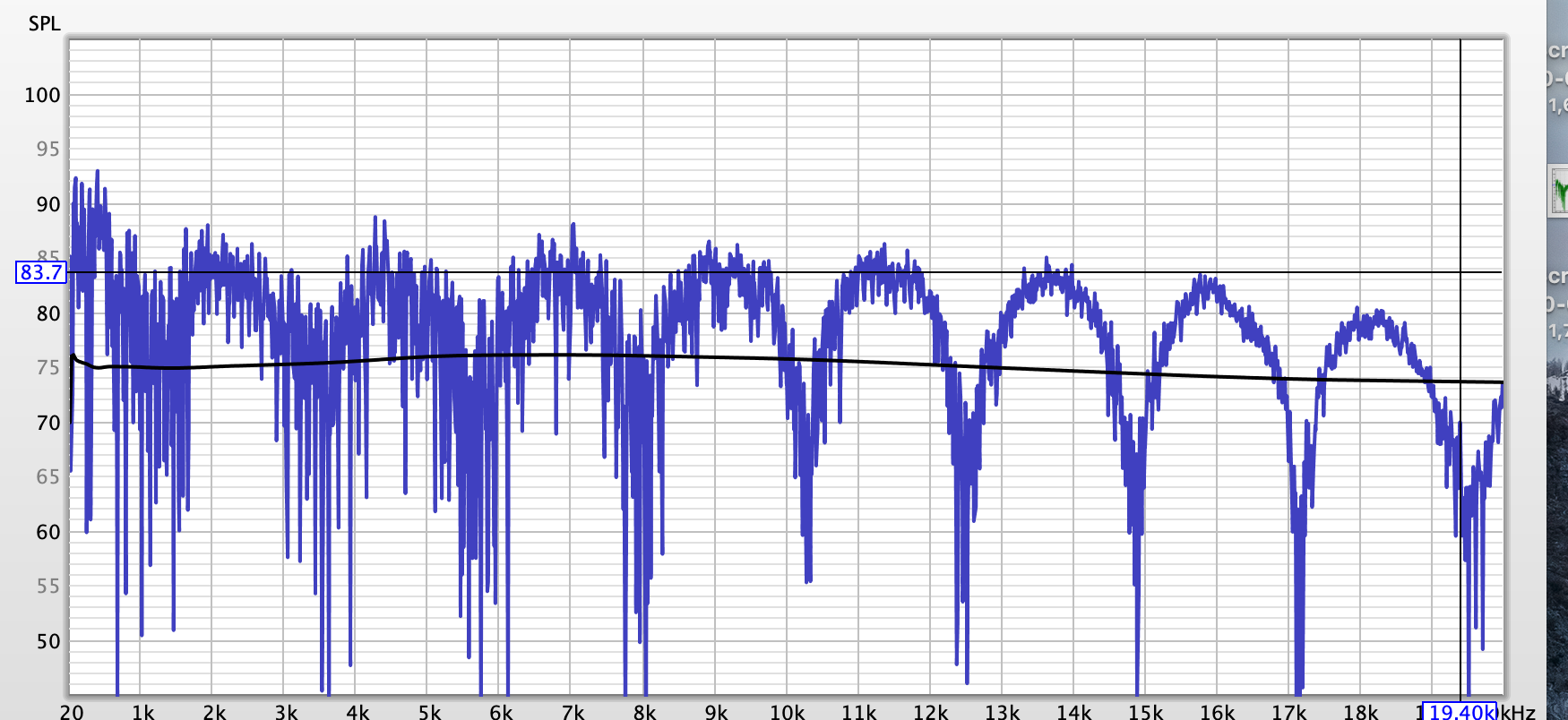I am trying to optimize the acoustics of a room in my house for music listening. I use a computer that runs a free app called, REW (room Equalization Wizard) . This app can play a test noise through my speakers and simaltaneously record the resulting output and echoes through a calibrated microphone attached to one of its USB ports. I did some measurements and am getting some weird resonances. The speakers are 72" apart and the distance to the microphone is 72" as well (an equilateral triangle). The frequency vs loudness graph looks like this:
 When I move the microphone 2 inches to the right so that the distance to the left speaker is 73" and the distance to the right speaker is 71 inches the frequency sweep looks like this
When I move the microphone 2 inches to the right so that the distance to the left speaker is 73" and the distance to the right speaker is 71 inches the frequency sweep looks like this
 moving the microphone again so it is 4 inches to right of center results in
moving the microphone again so it is 4 inches to right of center results in
 and moving it to 6 inches to the right of center gives
and moving it to 6 inches to the right of center gives

A 4 inch wavelength sound wave has a frequency of 3376 hertz. Maximum destructive interference would occur at difference of 2 inches from one speaker to the other and this is seen in the second turquoise graph.There is a dip at the expected region of 3400 hertz. But why are there dips at 11k and 18k as well? The wavelength at 11k is 1.29" and the wavelength at 18k is .75"
And when the microphone is moved to 4 inches to right of center, I measured the distance to the left speaker at 74" and the distance to the right speaker is 70". The expected positive reinforcement at 3.4k is actually seen at 3k And there are again multiple other peaks.
Moving the microphone 6" to the right results in 75" to L speaker and 69" to R speaker.
Can some explain why I get such a regularly distributed array of interference peaks across the frequency spectrum?
To rule out artifacts from the speakers I measured the frequency response of each speaker alone and the result was an almost flat curve (Revel ultima Salon2 speakers). To rule out artifacts from the signal processing chain, I reproduced these results using a mac laptop and sending the signal to different DAC. The space where this is being done has sound absorbing material on the walls (heavy curtains). The distance from the speakers to the back wall is 72" and the distance from each speaker to its respective side wall is 45".
